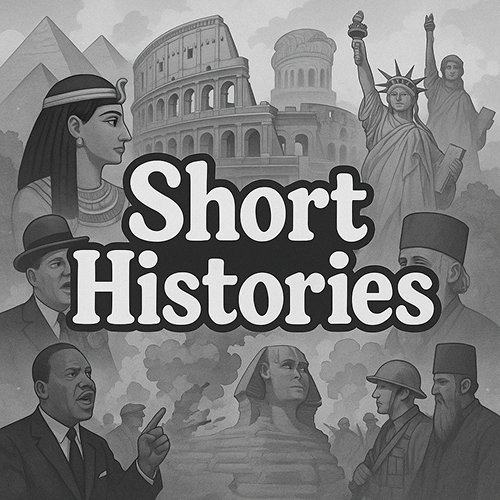When the Northmen came, they came with no warning. One morning, a village would wake to the sound of birds. The next, to the clash of iron and the roar of flames. This was the Viking Age of Conquest, a time when Europe learned to fear the longship’s silhouette on the horizon.
From Plunder to Power
At first, their raids seemed random: monasteries, coastal villages, river towns. Lindisfarne, 793 AD, a peaceful monastery in England became the infamous dawn of the Viking terror. The monks were slaughtered. The church burned, the gold taken and Europe shuddered but soon it became clear: this wasn’t just plunder. It was ambition.
They followed rivers deep inland: the Seine, the Thames, the Rhine, the Volga. They struck Paris, London, York, Constantinople. Where they did not kill, they traded. Where they did not trade, they settled.
They weren’t a horde, they were a force reshaping the world.
Conquest Carved in Blood
In England, they found a fractured land of petty kings and squabbling lords. The Great Heathen Army descended in 865 AD, a coalition of Viking forces, not just raiders but conquerors. They seized York (Jorvik) and made it a Norse city, a jewel in their expanding crown. In Ireland, Dublin was founded not by Celts, but by Northmen its roots Viking to the bone.
Francia tried to resist, sometimes they fought, sometimes they paid: vast sums of Danegeld, protection money to keep the wolves at bay. Yet the wolves always returned.
Even Russia owes its name to the Rus, Norsemen who sailed south and founded the trading routes that would birth nations: Novgorod. Kiev. The seeds of empires.
They ventured east to Byzantium, where Viking warriors became Varangians - the feared guard of the Byzantine Emperor himself. To the south, tales spread of blond giants serving in silken armor, carving reputations in lands far from home.
Why Fear Them?
Speed, surprise and ruthlessness. Their longships could appear where armies couldn’t march. Their warriors moved fast, struck hard, and vanished into the mist but not all came for war. Many brought families. Settlements grew: Normandy (literally "land of the Northmen") became a duchy under Viking control. In time, these Norsemen would become the Normans that would later conquer England itself at the Battle of Hastings.
Their influence stretched further than their blades. They changed laws, languages, maps. Towns they founded still stand. Words they spoke still echo.
Thursday (Thor’s Day), Wednesday (Woden’s Day). Their gods lived on in our calendars.
Legacy of Fire and Ice
By the dawn of the 11th century, the Viking raids had slowed. Christianity had seeped into the north, softening edges but not erasing pride. Many Viking kings now wore crosses alongside their swords.
Yet the mark they left could never be undone. Their descendants ruled England, shaped Russia, fortified France, and crossed oceans before others dared.
Their legacy?, written not just in blood, but in stone, language, and law. They were not merely raiders. They were architects of history.
Next Time: The Vikings Part Four — Legends of the Longships: Heroes and Heritage
Meet the men who became myth: Ragnar Lothbrok, Erik the Red, Leif Erikson, and Harald Bluetooth and discover how their legacies still shape the world today.
Please go back to top & scroll gently

